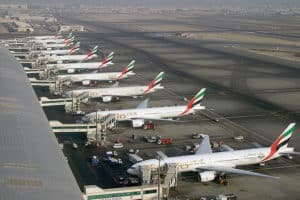 The recent plane crash at Dubai International Airport, as well as several incidents involving IT systems disruption and protests at London airports, have all served to highlight the need for robust contingency planning in all airports worldwide.
The recent plane crash at Dubai International Airport, as well as several incidents involving IT systems disruption and protests at London airports, have all served to highlight the need for robust contingency planning in all airports worldwide.
If there is an incident on any level – the extreme of landside terrorism at Brussels Airport earlier this year, for example, or the Black Lives Matter protests at London City Airport in September, there must be measures put in place to guarantee the safety of staff and passengers and also to ensure that the airport either keeps operations going, or is up and running again as soon as possible. The inevitable delays involving baggage, passengers, aircraft and schedules, not only cause an immediate problem to airports, but can also take a long time to clear.
Contingency planning means having a recognised structure and model for what happens when things go wrong, who works where and how to evacuate a building safely, quickly and successfully. Planning for disruption and unexpected incidents is a key part of the projects AiQ Consulting undertakes for major international airports. It gives airports confidence that their contingency or mitigation plans will work for any scenario and that their resources are always put to the best use.
There are three potential types of disruption that airports need to plan for. These are the loss of landside activity, loss of airside, and loss of baggage systems that work between landside and airside. With our bespoke software, use of data modelling and years of experience, we model the impact, requirements and resources any type of major incident would have at the airport or terminal. From these specific scenarios, we can then put together plans, which input into resourcing needs for the airport. Whether this is an evacuation type simulation or something a bit less intensive, these plans and resourcing issues are vital to airports.
Resources are a key factor in contingency planning, and need to be considered very differently from day-to-day planning and scheduling. Whether this is using existing resources in another way; or bringing in additional resources; contingency resourcing needs a very different approach.
Recently we have created mass disruption plans for Heathrow Terminals 3 and 5, looking into events that may require major contingency. Very few of these are accidents forcing closure of the airport or runways in some way, but all have a recognised impact on the airport that must be mitigated to avoid chaos and unhappy passengers.
It is an extremely important aspect of the projects we carry out for airports. If you’d like to find out more about contingency planning, contact us today.
Image Source: Konstantin von Wedelstaedt http://www.airliners.net/photo/Emirates/Boeing-777-31H/0923252/M/ via Wikimedia Commons

